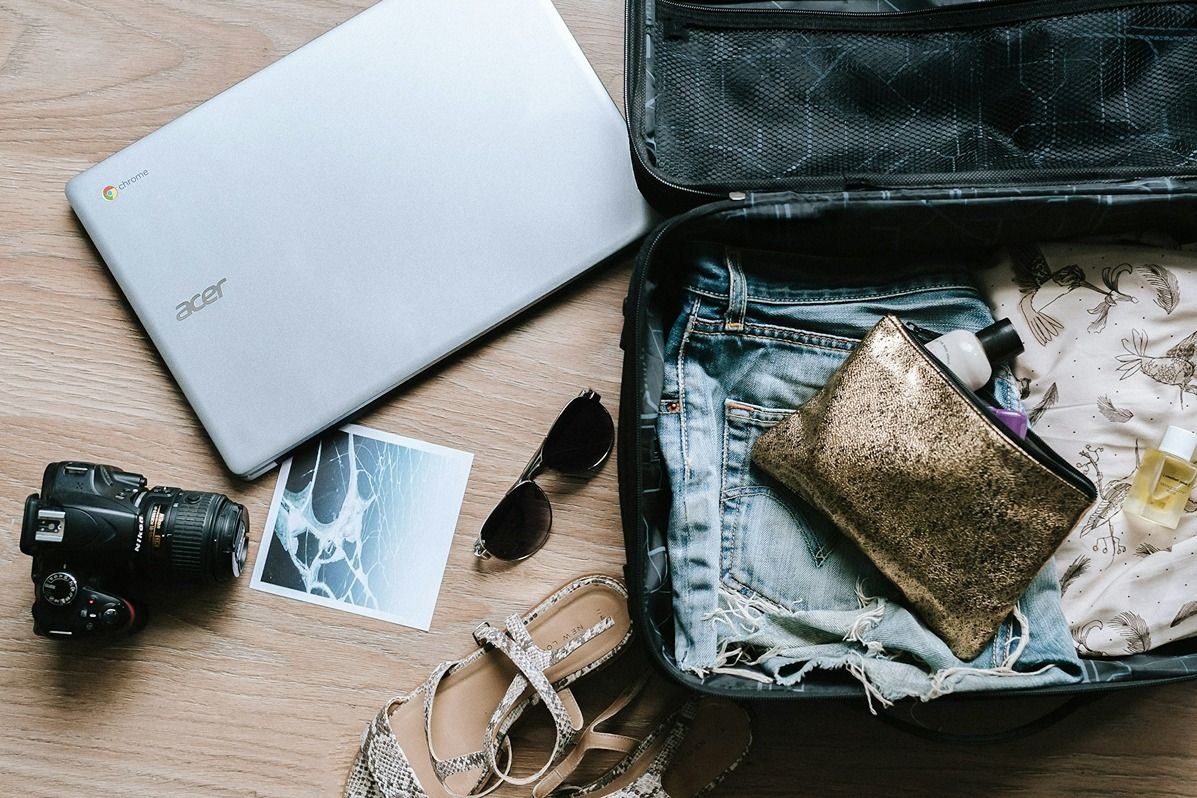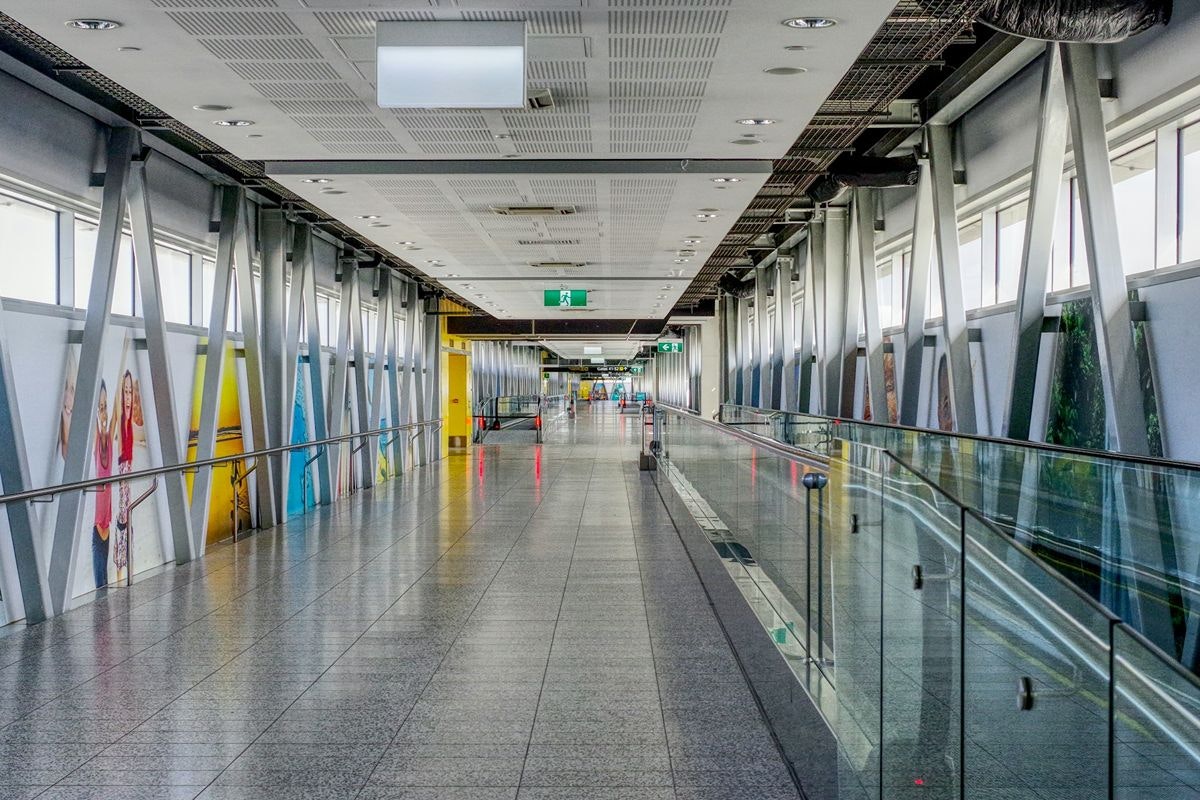Don’t leave without these! 10 essential items to include in your luggage for Australia
Heading to Australia and not sure what to pack? Here we'll discuss the essential items to bring to Australia and what you should pack in your suitcase before traveling.

By:
LINA AVILA HENAO
Last Updated:
Sep 13, 2024
Tags:
#before-you-leave #travel
In this article
If you’re reading this, I imagine it’s because you’re coming to Australia and your trip is close. This is undoubtedly a very exciting time, but it can also cause some nerves, which is understandable. You’re traveling to a destination far from home, one you’ve never been to before, and you want to know what to bring.
Well, packing your suitcase is one of the hardest parts of planning. How do you fit your life into a suitcase, or at least clothes for 6 months of stay? From my own experience, I tell you that you need to be strategic here.
In this post, we’ll mention the items you absolutely must bring and that you’ll use most often. We’ll also give you some tips for choosing them.
1. A Good Jacket
If you’re going to Melbourne, Tasmania, or Adelaide, a top-quality jacket should be your priority. Melbourne is a city where it’s cold 9 months of the year. When I say “good jacket,” I mean one that has cold protection but also against the wind.
Temperatures can drop slightly below 0, and although snow does not fall directly in the city, the wind coming from the Arctic is too cold and gives a lower thermal sensation than the weather forecast.
Another important fact is that buying a good jacket in Australia can be quite expensive. So, if you know, come prepared.
2. Clothes for All Seasons
I recommend bringing clothes for all climates. As I mentioned earlier, Australia is a country with 4 seasons, even if the changes aren’t as pronounced in certain parts.
In cities like Melbourne, the weather is very changeable, and you can even experience all four seasons in one day (there are many jokes and memes about this).
Personal recommendation: Bring more clothes for the season you’re coming in. For example, if you arrive in summer, bring more items (sandals, tank tops, shorts) for that type of climate, and then when you start working, you’ll see that you can expand your wardrobe a bit. However, don’t forget to bring a good pair of jeans and black pants (in case you work in hospitality).
In Australia, the majority of affordable clothing have a different shape. In my case, I have curves, so the pants on sale in stores here don’t fit over my hips, or the blouses are too tight at the bottom of the waist.
Another issue is that the clothes tend to be in very neutral colours, and most people dress in brown, black, or gray. A wide variety of colours is not very common, and fashion tends to be monotonous and very repetitive.
And here I go again, good quality clothes in Australia are too expensive. So if you bring your nice things from your country, you won’t need to buy anything, at least not at first.
3. Shoes for Walking a Lot
A pair of very good quality shoes, with a resistant sole and comfortable. Get ready to walk long distances and in all kinds of weather, so if the shoes are water-resistant, that’s great!
Many students start working in hospitality, and to access jobs in this area, you need a certain dress code and black closed shoes. I recommend that you bring some from Colombia that are super comfortable. I didn’t bring closed black shoes, and I had to buy some in Australia, and honestly, they were not comfortable and also of poor quality.
4. Underwear
Here I include panties, bras, boxers, and socks!!! These items CAN be found in Australia at low prices, but you won’t find quality unless you pay - for example the popular brands for mens boxers cost around $20 a pair.
Its pretty clear that the Colombian quality of these garments is superior and they have a much longer lifespan.
5. Swimwear and Sunglasses
These items won’t take up much space in your suitcase, and I can guarantee that at some point during your stay in Australia, you will visit the beach.
The sunglasses are important to protect your eyes from the sun’s rays. I imagine you’ve heard about the radiation in Australia, so come prepared.
I wouldn’t recommend using kilos of your luggage bringing sunscreen; you can buy it here from $30 AUD/1 Litre.
6. Nail Care Kit (applies mostly to girls but also for guys)
Paying for a manicure or pedicure in Australia is almost untouchable. There are places that specialise in this service, generally managed by women from Asia. Unfortunately, and in my opinion, the result of the service doesn’t even come close to what we are used to see in Colombia for nail care.
At the beginning you can do it yourself using your kit. Later, when you are established, you can look for this service within the Latin community; there are girls who offer this service.
7. Medicines
If you need to bring special medicine, you should bring it with a medical prescription (hopefully translated into English) and declare it on an incoming passenger card before crossing the border into Australia. It is possible that they will check your suitcase upon entry into Australia and ask you for medical support for that medicine.
I recommend that you bring a good amount of that medicine because if you run out and need more, then you must go to a GP (General Practitioner) to get them prescribed because it is very likely that they are not over-the-counter. You can validate the Colombian formula with the GP in Australia, but it is possible that you will not find exactly the same medicine with the same name, but you will find something with similar components.
Basic medicines for headaches or colds, Vicks pills, vitamins are not much of a problem; however, if you bring them it is better to declare them.
8. Voltage Adapter
It may seem obvious, but in Australia the voltage is 220V and has a different plug shape, so you will need a voltage adapter for any devices that use a wall plug.
Additionally, if you have many devices to charge it can be easier to bring a power board so that you can charge multiple devices at the same time (e.g. computer and mobile phone) using only one wall adapter.
Another option is to buy local chargers if your devices are charged via USB, as these are inexpensive to buy when you arrive.
9. Diplomas and Study Certificates
If your intention is to continue studying in Australia after finishing your English course, or if you want to start a migration process, I recommend getting your diplomas and study certificates apostilled and translated (by a certified translator) and bringing them along. Believe me, you will need them to apply for subsequent visas and also avoid that your family have to send documents or do paperwork for you in Colombia.
10. Pack a Good Attitude
It helped me to come prepared and mentally ready to do jobs that weren’t going to be exactly in my profession. I think that coming open to change, to meet new people, to live in a new culture, and to see life in a more relaxed way helped me to integrate faster into the culture.
What Didn’t Help Much?
I brought a pillowcase that I never used. These types of items can be found cheaply in a chain store.
I also brought clothes hangers (advice from my mom) that only took up space in my suitcase.
It occurred to me to bring a hairdryer, and honestly, it wasn’t the best decision—you can get one cheap in Australia and with the Australian plug already.
To finalise
I want you to know that I was once in the place you are now, with many questions about what to pack, but believe me, with this list, you are more than prepared.
If perhaps we forgot to include some items, please let us know in the comments!


